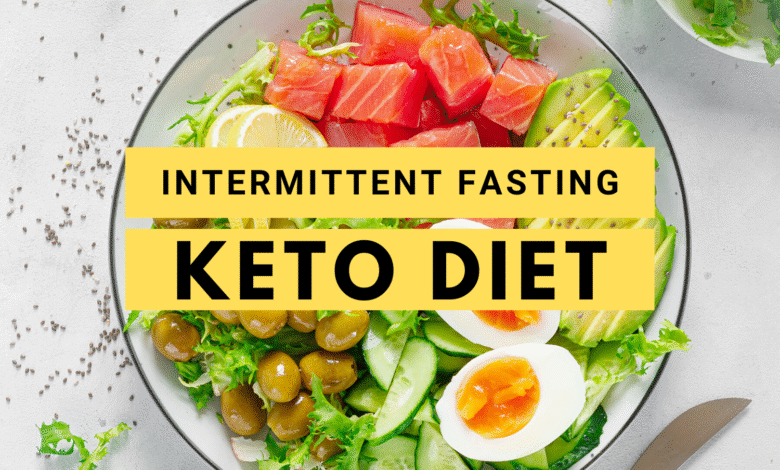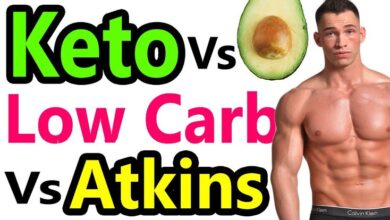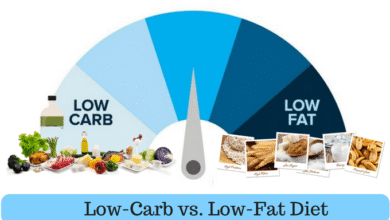
5 Tips for a Successful Keto Intermittent Fasting Journey
Embarking on a keto intermittent fasting journey can feel like stepping into a whole new world of dieting and lifestyle changes. It’s more than just cutting carbs or skipping meals—it’s about creating a sustainable, rewarding approach that blends the best of two powerful health strategies. If done right, keto intermittent fasting can help you burn fat, stabilize energy, and even improve mental clarity. But, without the right guidance, it can also feel overwhelming.
That’s why I’ve put together this ultimate guide. I’ll break down the five essential tips that will not only help you start but also succeed on this journey. Think of this as your roadmap—simple, practical, and packed with strategies that actually work.
Read Also 7 Essential Foods for Your Keto Intermittent Fasting Plan
Why Keto Intermittent Fasting Works
Before diving into the tips, let’s quickly understand why combining keto and intermittent fasting has become such a buzz in the health and fitness world. Keto pushes your body into ketosis, where fat becomes your primary fuel source. Intermittent fasting, on the other hand, improves insulin sensitivity, helps regulate hormones, and supports fat loss.
When you combine the two, the synergy can feel almost magical—you burn fat more efficiently, avoid energy crashes, and feel lighter both mentally and physically. According to Healthline, intermittent fasting paired with keto can amplify weight loss results and metabolic health.
Tip 1: Start Slow and Listen to Your Body
Jumping headfirst into strict keto while fasting 18 hours a day sounds tempting, but it’s also a recipe for burnout. Start slow:
- Begin with a 12–14 hour fasting window.
- Gradually lower carb intake to transition into ketosis.
- Focus on nutrient-dense meals during your eating window.
Your body needs time to adapt to using fat instead of carbs as fuel. Think of it like teaching your car to run on a new kind of fuel—you don’t slam the pedal to the floor on day one.
Tip 2: Prioritize Electrolytes and Hydration
The dreaded “keto flu” is often a result of electrolyte imbalance. When carbs are reduced, insulin levels drop, and the body flushes out sodium, potassium, and magnesium. Combine this with fasting, and dehydration can hit hard.
Here’s how to fix it:
- Add a pinch of Himalayan salt to your water.
- Eat magnesium-rich foods like spinach or nuts.
- Drink plenty of water throughout the day.
This simple habit will keep your energy stable and your brain sharp.
Tip 3: Break Your Fast the Smart Way
What you eat to break your fast matters just as much as how long you fasted. Breaking your fast with high-carb meals or sugar can spike insulin and undo your progress. Instead, aim for:
- Healthy fats (avocado, olive oil, coconut oil).
- Lean proteins (chicken, fish, eggs).
- Low-carb veggies (broccoli, zucchini, spinach).
A balanced keto-friendly plate will keep you satisfied and fuel your body for hours.
Tip 4: Use High-Quality Fats for Energy
One of the biggest mistakes people make is relying on low-quality oils or processed foods. Not all fats are created equal. For optimal results, include:
- Grass-fed butter or ghee.
- Extra virgin olive oil.
- Avocados.
- Fatty fish like salmon.
These healthy fats not only fuel ketosis but also provide anti-inflammatory benefits that support long-term health.
Tip 5: Track Your Progress and Stay Flexible
What gets measured gets managed. Use tools to monitor your fasting hours, ketone levels, and how you feel overall. Apps like Zero or Carb Manager can help track your habits effortlessly.
But don’t get caught up in perfection. Some days you may eat a little more protein, or your fasting window may be shorter—and that’s okay. The key is consistency, not rigid perfection.
Common Mistakes to Avoid
- Overeating during your eating window.
- Skipping electrolytes and hydration.
- Breaking fast with high-carb or processed foods.
- Expecting overnight results.
Sample Keto Intermittent Fasting Meal Plan
| Time | Meal | Example |
|---|---|---|
| 12 PM (break fast) | Keto-friendly lunch | Grilled salmon, spinach salad with olive oil |
| 3 PM | Snack | Hard-boiled eggs, avocado slices |
| 7 PM (last meal) | Dinner | Chicken thighs with broccoli and butter |
Is Keto Intermittent Fasting Right for You?
This journey isn’t for everyone. People with certain health conditions, pregnant women, or those on specific medications should consult a doctor first. According to Cleveland Clinic, fasting may pose risks if not tailored to individual needs. Always check with your healthcare provider before making major dietary changes.
Conclusion
Keto intermittent fasting is more than just a diet trend—it’s a lifestyle shift that can transform your health, energy, and confidence. By starting slow, fueling your body with the right nutrients, and staying flexible, you can build a sustainable routine that works for you. Remember, it’s not about chasing perfection but about creating consistency.
Read Also 10 Delicious Keto Meals for Intermittent Fasting Success – High Protein Recipes for Weight Loss
FAQs
1. How long should I fast while on keto?
Start with 12–14 hours and increase gradually to 16–18 hours if your body feels comfortable.
2. Can I drink coffee while fasting on keto?
Yes! Black coffee, green tea, or herbal tea are fine. Just avoid sugar and high-calorie creamers.
3. Do I need supplements while combining keto and intermittent fasting?
Electrolytes (sodium, potassium, magnesium) are highly recommended to prevent fatigue and cramps.
4. Will I lose muscle on keto intermittent fasting?
Not if you include enough protein and resistance training. The body prioritizes fat for energy in ketosis.
5. How quickly will I see results?
Many people notice changes in 2–4 weeks, but long-term consistency is the real key to success.





One Comment